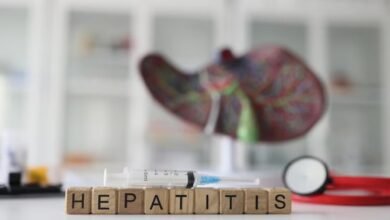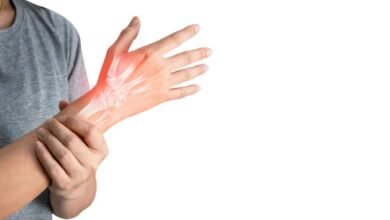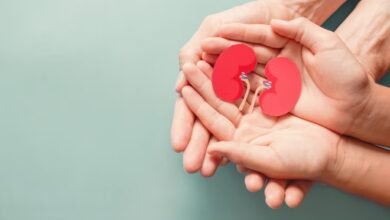What Causes Understanding Ingrown Toenails?

Do you know What Causes Understanding Ingrown Toenails? Onychocryptosis is a condition that affects 20% of people’s feet, according to the medical community. Individuals in their 50s and 60s, as well as children between the ages of 10 and 20, are regularly impacted.
If you’ve had pain or swelling in your toes, it’s most likely an ingrown toenail. It can be highly uncomfortable in addition to hurting. This article will teach you all you need to know. From the reasons for it to how to prevent them and even how to handle them at home, we’ve got you covered.
Read More: Three Effective Treatments for Chronic Inflammations
What Causes Ingrown Toenails?
An ingrown toenail is a common condition that occurs when the corner or edge of the toenail grows into the surrounding skin. This can cause pain, redness, and swelling, and in severe cases, can lead to infection or even the loss of the affected toe. While ingrown toenails can be caused by a variety of factors, there are several common causes that are worth exploring.
One of the primary causes of ingrown toenails is improper nail trimming. When toenails are trimmed too short or at an angle, they are more likely to grow into the skin. Similarly, rounding the corners of the toenails instead of cutting them straight across can also contribute to ingrown nails. It is important to use proper nail trimming techniques to prevent ingrown toenails, including cutting straight across the nail and leaving a small margin of the nail beyond the end of the toe.
1. Fungal contamination
The nail will become thicker and have a greater tendency to penetrate the epidermis if it has an athlete’s foot or another nail fungal infection.
2. Wrong Cutting of Nails
Your nails may grow if they are not properly cut or clipped. For example, pruning them too short or forming the edge in a circle rather than a straight line may lead them to grow, which could be uncomfortable.
3. Small Shoes/Footwear
If you wear small shoes or socks that are excessively tight, ingrown nails may form as a result. In the event that you press against them, they frequently hurt.
4. Trauma or Injury
You might unintentionally step on your toes, have heavy things fall on them, or experience other trauma. Your toes’ nails may consequently start to grow into your skin, which would cause this condition.
5. Genetics
Some people may be more vulnerable to this expansion due to genetic factors. The shape of the nail or the anatomy of your toes may in some cases make it more likely that they may grow into your skin.
Ingrown Toenails Symptoms
Overgrowth of your tissue:
The skin around the nail may occasionally grow excessively, causing a little bulge or protrusion to appear.
Discomfort and pain:
The skin around the nail develops a sore, tender, or painful area.
Becomes red and starts to swell:
The skin around your nail may frequently begin to swell or turn red and inflamed.
Numbness and tingling:
When the nail pierces the skin, some people may experience numbness or tingling in the affected area.
Pus or discharge may appear when it becomes infected, particularly in the vicinity of damaged areas. Infections typically make this problem worse near where the nail is growing.
Difficulty wearing your footwear:
If the problem progresses, it could become more challenging to wear socks or shoes, especially if they exert pressure on the affected area.
Risks Associated With Ingrown Toenails

Leaving it unattended could result in a number of issues, including:
1. Cellulitis
It is a bacterial skin infection that can develop swiftly and cause swelling. The infection may also go past the toe and cause redness around the affected area. Cellulitis needs to be treated by a doctor very away in order to prevent problems.
2. Infection
Little skin tears brought on by this condition can allow bacteria to enter and lead to sickness. An infected nail can be extremely painful at times or cause pus or discharge, in which case antibiotic therapy may be necessary.
3. Poor Mobility
Extreme cases of this development can make it difficult or even impossible to walk or wear shoes without discomfort, which has a significant negative impact on a person’s quality of life.
4. Abscess
An abscess is a collection of pus that over time turns into a medical disease. In some cases, an infected nail may turn into an abscess that needs to be surgically drained.
5. Nail Deformity
Twisted or deformed growth may be the outcome of an ingrown nail’s abnormal growth pattern.
Read More: Hearing Loss Due to Tinnitus is Possible
How To Remove
You might need to use an ingrown toenail file to successfully treat an ingrown toenail at home. Otherwise, bleeding and more difficulties will result.
The best course of action is to go see a podiatrist or other healthcare specialist right away so they can remove the nail growth in a secure and efficient manner.
The following actions are often included in the treatment for this health condition:
Soaking the foot:
Warm water applied to your toes for 15 to 20 minutes will assist to minimize edema and soften the skin and nails around it.
Lifting the nail:
A doctor or podiatrist could gently elevate the nail after it has completed soaking and tuck a piece of cotton or dental floss underneath it to help it push through the skin.
Trimming:
When the nail has been removed, the medical professional may trim the nail’s edge to prevent it from growing back into your skin.
Antibiotics:
If the toenail is infected, your doctor may advise antibiotic medications to assist you treat this condition.
After therapy, it’s critical to keep the injured foot clean. Be sure to follow the doctor’s instructions to prevent the growth from returning.
In some cases, stopping additional development could need regular pruning or a switch in footwear.
Conclusion
If left untreated, this condition could get worse and have an infection or abscess as a result. If you encounter any of the aforementioned symptoms, it is imperative to seek medical attention from a healthcare provider or a podiatrist. Getting trustworthy advice on how to avoid this issue is essential.







